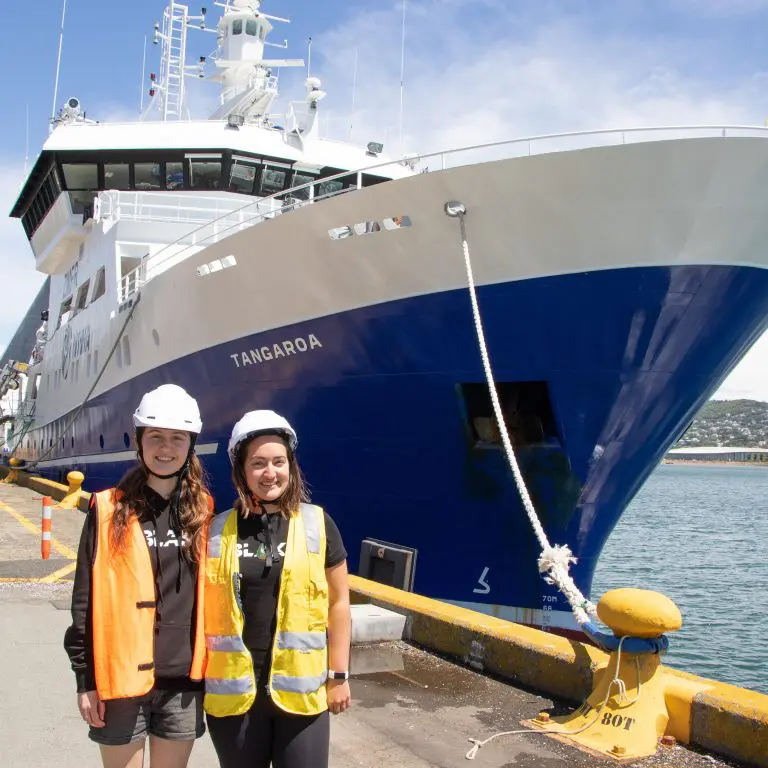In November 2019 BLAKE NIWA Ambassadors Melanie Hayden and Hiromi Beran, and BLAKE Programme Manager Bhakti Patel, set off on the TAN1908 voyage to the Sub-Antarctic Region with programme partner The National Institute of Water and Atmospheric Research (NIWA). They were at sea for a month during November-December 2019, with the crew of Research Vessel Tangaroa helping NIWA scientists gather information for understanding and modelling the effects of climate variability on ecosystem function in the Sub-Antarctic Region.
Where is the Sub-Antarctic Region?
RV Tangaroa sailed throughout the Sub-Antarctic Region to random stations as far south as South of Campbell Island. This region is still within the Exclusive Economic Zone (EEZ) of New Zealand. Because of its remoteness and wild weather, data from this region is scarce. The research conducted on this voyage is the first of its kind in this region.
Why the Sub-Antarctic?
The objective of the voyage was to collect information for understanding and modelling the effects of climate variability on ecosystem function in the Sub-Antarctic Region. Changes in climate may effect protected species and important fisheries species.
The marine ecosystem of the Sub-Antarctic Region includes several commercially important fish stocks, including hoki, southern blue whiting, and arrow squid. Additionally, some of New Zealand’s megafauna species (fur seals, sea lions, albatross) have major breeding colonies in this region.
NIWA wanted to collect information on middle trophic levels (small fish, squids etc) to better understand and model the effects of environmental variability and change on ecosystems. In particular we looked at the effects on protected species and commercial fish.
What did they do?
There were several objectives of the voyage:
- Carry out acoustic surveys to estimate the relative abundance of micronekton (2-20cm in size). Acoustic surveys allow us to detect the abundance of target species by using the reflection of sound energy. To learn more about this, click on this link.
- Do mark identification sampling to ground-truth acoustic data and collect biological information of micronekton. This was done using midwater trawls.
- Carry out a bottom trawl survey to assess the spatial density of commercially important species: hoki, southern blue whiting, and southern arrow squid. This allows us to estimate habitat preference of different age-stages of these species.
- Acoustic transects were done at selected regions of the Subtropical Front and western Auckland Islands to determine the spatial density of mesopelagic species in megafauna (e.g. seals and sealions) foraging hotspots and high productivity areas.
- Collect environmental data for developing climate predictors of midwater fish using a CTD.
These activities were carried out at random stations across the Sub-Antarctic. At each station an acoustic and bottom/midwater trawl was done to estimate the relative spatial density of mesopelagic (200-1000m depth) species. One a sample was brought on board, the scientists collected data on size, gender, reproductive stage, stomach contents, and collected otoliths (ear bones) to age fish- you can learn more about otolith ageing at this link.


